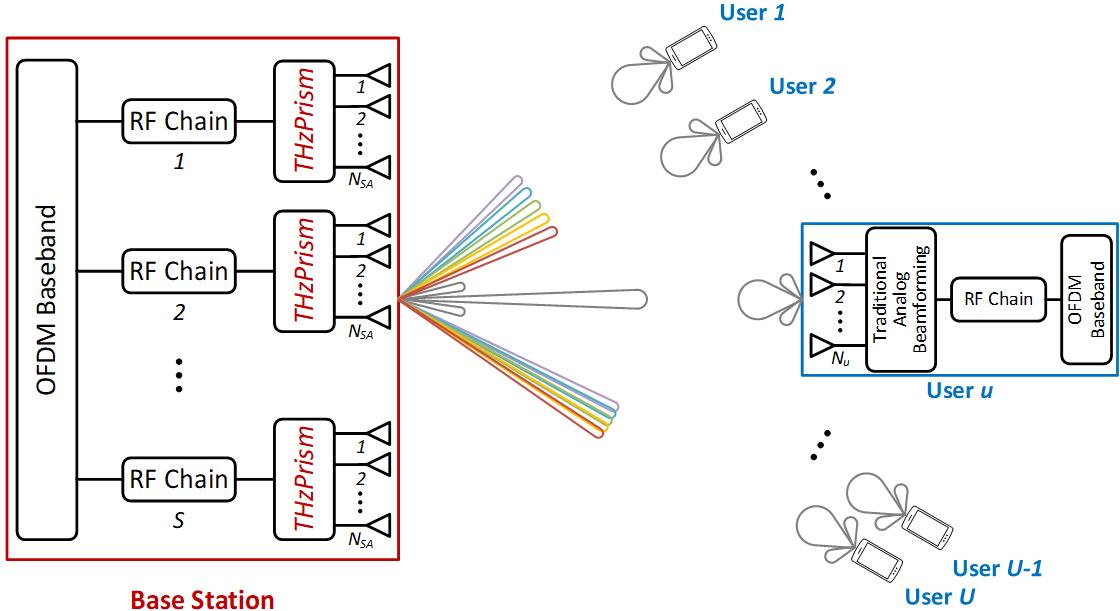|

Thanks to the ultra-large bandwidth in terahertz (THz) band (0.1-10 THz), THz communications are envisioned as a key building block of the next-generation wireless communication systems. In THz communications, to compensate for the severe path loss of THz signals, analog beamforming technologies based on multi-antenna arrays are usually adopted to provide a strong directional gain such that a THz beamwidth is narrowed to a few degrees of coverage. Such a narrow coverage can only serve a very limited number of users. To cover more users, we developed a new beamforming architecture called THzPrism to enlarge the angular coverage range. Based on THzPrism, a new multiple access technique called Spatial-Spread Orthogonal Frequency Division Multiple Access (SS-OFDMA) is developed for Terahertz networks.
THzPrism spreads a single THz beam with the whole frequency band into a bundle of directional subcarrier beams, each with different frequency subcarriers pointing at a different direction. In SS-OFDMA, a hybrid THzPrism beamforming (HTB) architecture is firstly designed for the base station (BS). Afterwards, a user grouping scheme, a non-uniform beam spreading scheme, and a resource allocation scheme are developed. As a result, the spectrum and energy efficiency of multiple access in a THz network can be significantly improved, and the utilization efficiency of RF chains is also increased.
People: Bangzhao Zhai, Aimin Tang
|